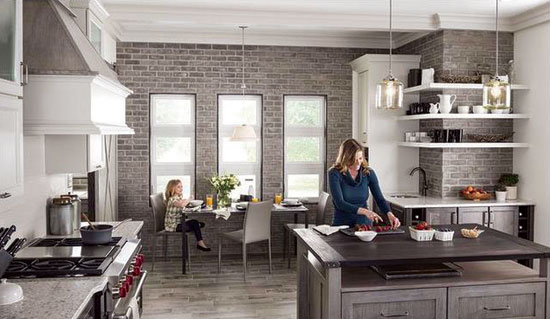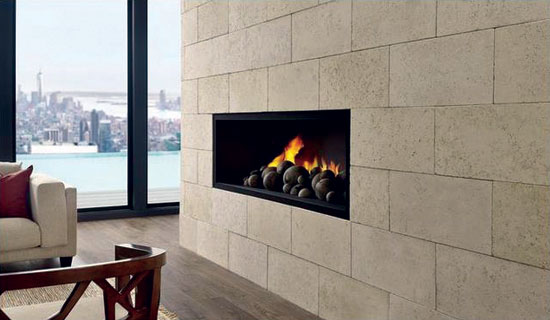Enhancing Design Excellence with Innovative Surface Solutions
Performance Considerations
Moving on from our discussion of design characteristics, we turn our attention to the performance of surface finish materials. Here we are concerned with the way the materials or products resist the forces imposed on them from people or machinery and generally hold up over time. Essentially, this is a measure of durability that assumes that the appropriate product or material has been specified for a particular application.
Wall Performance
Vertical interior walls are generally regarded as needing less performance strength than horizontal surfaces. However, that will really depend on the type of building being designed. Architectural stone veneer creates a strong focal point on interior walls that may get viewed and scrutinized more than other surfaces since designers can use stone to bring nature inside and draw attention to elements of their design. Hence, the material needs to perform both from a technical and aesthetic point of view. The aesthetic performance is based on using flat pieces and corner pieces together to wrap walls and window surrounds, creating the look of full-depth stone. On the installation and quality side, the color depth, texture detail, and use of high-quality materials are important to withstand normal wear and tear and potential abrasive contact.


Photos courtesy of Eldorado Stone
The performance of architectural stone veneer makes it suitable for a wide range of applications such as limestone veneer panels around a fireplace (bottom photo) or rugged brick masonry veneer panels used to enhance a kitchen design (top photo).
Part of the performance can be based on the surface characteristics of the architectural stone veneer. For example, fairly smooth veneer products emulating limestone in large panels on the order of 12 inches x 24 inches or similar will have fewer joint lines and a flatter texture that may be well suited for areas that are exposed to more activity. Similarly, brick patterned veneers with rugged textures and intentionally mixed colors may be appropriate for areas that need regular cleaning or more durability such as in kitchens or other higher-usage rooms. Yet, at just an inch thick, either of these veneers is thinner and significantly lighter than traditional brick or stone panels. That means that installation is simplified and if repairs are ever needed, those will be easier to handle as well.
Many of the attributes discussed of manufactured architectural stone veneer also reinforce the green and sustainable features of the product throughout its life cycle. Beginning with raw materials, manufactured stone is typically made from lightweight concrete meaning it reduces the amount of natural stone excavated around the United States and the world. With multiple manufacturing facilities, manufactured stone is generally available within 500 miles of the vast majority of the U.S. population. In addition, it is common to use only local sources for raw materials at each facility. Plus, at half the weight, it considerably reduces shipping weights and the associated impacts of transportation. Moving to manufacturing, certain manufacturing facilities incorporate pre-consumer recycled content into the stones. Most suppliers can provide a fact sheet for a local plant upon request while many continue to research higher percentages and expanded use of recycled content.
Notice

www.eldoradostone.com

www.gerflorusa.com

www.quietwalk.com









